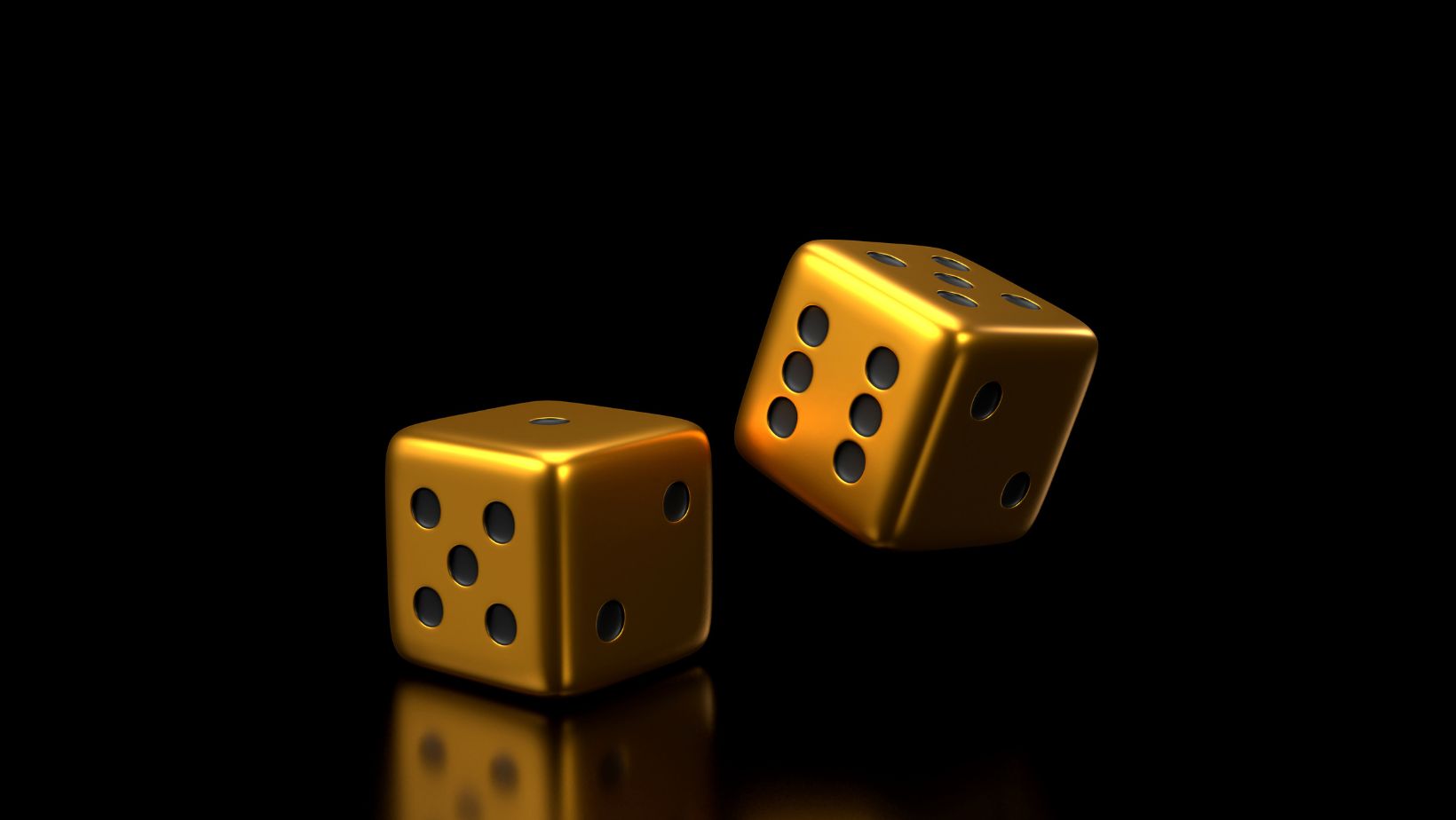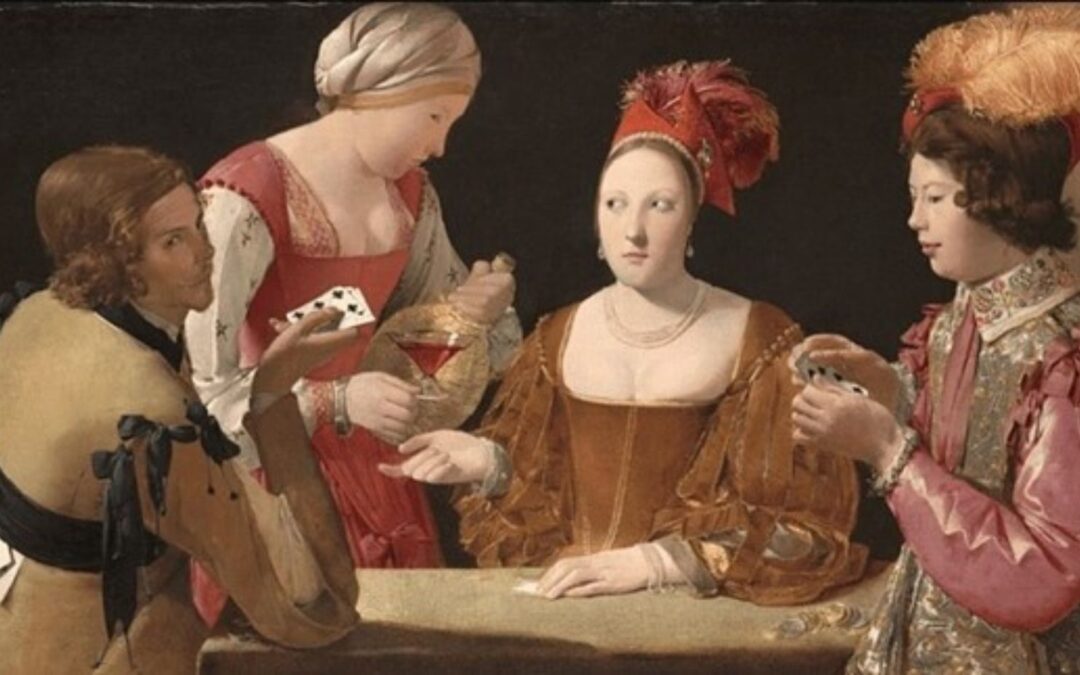There is a unique bond between gambling and art that dates back many centuries. Art has explored the theme of gambling in many ways, looking at both its psychological and cultural aspects, as well as the drama and tension it brings. Join us to examine the artistic techniques, symbolism, and cultural significance of some of the most well-known paintings depicting gambling.
The Allure of Gambling in Art
Artists are drawn to gambling because it offers a truly diverse range of emotions and storylines for them to explore. Through their work, artists capture the heart of the human experience. They invite viewers to get caught up in the world of chance and uncertainty.
Iconic Paintings That Feature Gambling
Many great artists have created artwork featuring gambling that is recognized the world over. Here we name a few of them and discuss how and why they have left a mark in art history.
“The Cheat with the Ace of Clubs” by Georges de La Tour was seen as a moralistic look at gambling, warning against its dangers. The scene shows a young man brazenly showing his card behind his back to the viewer, while one of the women is helping another by plying the man with wine. All four reveal their emotions with their eyes.
His “Study for a Figure” was a testament to the Francis Bacon lifestyle of addiction and lost fortune that surrounded him while he lived for many years in Monte Carlo.
“The Cardsharps” by Caravaggio shows two men playing cards. One is cheating with the help of an accomplice. The picture gives a view of the dark side of gambling, where deception can easily occur. The artist reveals the realistic emotions of the characters, from the innocence of the young man to the cunning cardsharps with their calculating gazes.
“Dogs Playing Poker” series by Cassius Marcellus Coolidge. The painter added lighthearted humor to a classic gambling scene by using dogs dressed in human clothing as players at a poker table, taking aim at the existing concepts of art and culture at the time.
Édvard Munch’s “At the Roulette Table in Monte Carlo” captures Munch’s symbolism in the despair, drama, and gloomy excitement of Monte Carlo casino life. He even placed himself in the foreground as he took notes on the results.
“The Card Players” by Paul Cézanne: This series of paintings by Cézanne depicted everyday peasants as they were playing a game of cards, showing the extent of gambling as a social activity in the 19th century.
Fernard Leger produced two quite striking and unique images of men playing cards. “Soldiers Playing Cards” features metallic, robot-like soldiers playing cards in World War One as a comment on the machinery of war. “Les Gendarmes” features a much simpler sketch of two soldiers playing cards.
“Slot Machine Queen” by Shelley Wilkerson. This painting has been pigeonholed along with “Dogs Playing Poker” as populist and insignificant art work, yet it still conveys the joy and simplicity of playing casino slot machines.
Themes and Imagery in Gambling Paintings
Many of these classic works of art depict deceit, risk, luck, and addiction and reflect human behavior and social views on gambling in their times. Some show the balance of risk-taking and the thin line between success and failure. Darker images highlight the impact of obsession and compulsion. Dice and cards are symbols of good fortune.
The Evolution of Gambling Art
As society evolves, so does the portrayal of gambling in art. Artists and designers are exploring the realm of gambling in innovative ways. The old traditional images of smoky card rooms and elegant casinos are giving way to digital landscapes and virtual imagery. These changes reflect the evolution of gaming culture in our digital age.

The best online casinos have embraced digital art in the design of more immersive and realistic games. Brick-and-mortar casinos have been transformed from smoke-filled halls into theaters featuring art exhibits by famous artists and designers, as well as technological gadgetry. Brightly colored gaming rooms embrace advertising displays, sound and light effects, and pop art imagery.
Many gaming establishments feature stadium gambling, with theater-style seating around stages with hosts and entertainment. Slot machines come equipped with modern technologies and features to keep patrons on the edge. Other casinos are going retro, with the look and feel of glorious grand casinos like Monte Carlo.
With all of these changes, gambling’s appeal will continue to attract artists and their audiences.
At the End of the Day
Exploring artistic depictions of gambling gives us a look at the human experience. It reveals the complex relationship between risk and reward, fortune and foolishness. By looking at these iconic paintings, we can fully appreciate the artistic, historical, and cultural information they provide. They remind us of the ability of art to help us better understand the world we live in.


